-

Oct
25
Animal Welfare Question in Massachusetts Delayed
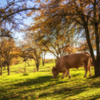
The Massachusetts House recently voted on the Question 3 initiative, prohibiting the sale of pork that does not meet the state’s production standards. Overwhelmingly, the House decided 156-1 to delay the initiative until January 1, 2023. Previously, it would have taken effect starting in 2022. The Massachusetts Senate still must vote on the decision.
Read more
-

Oct
25
Members of PCAST Announced

President Joe Biden announced the President’s Council of Advisors on Science and Technology (PCAST), external advisors charged with making science, technology, and innovation policy recommendations to the President and the White House. Thirty leaders were selected, containing the most diverse group in United States history.
Read more
-

Oct
21
Interpretive Summary: Potential use of ground brown rice for weanling pigs
.png?sfvrsn=48c74cd1_0)
Replacing corn with rice in diets for weaning or growing pigs has been studied in the past and has demonstrated improved growth performance and nutrient digestibility, but there is limited information about corn replacement with brown rice on growth performance, immune status, and gut microbiota of weanling pigs.
Read more
-

Oct
21
Interpretive Summary: Characterization of bacterial DNA identified in abscessed and non-abscessed bovine hepatic tissue at the time of harvest
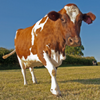
Bovine liver abscesses continue to be a primary concern facing beef production efficiency and, despite current mitigation strategies, significant variation exists in the rate of liver condemnation.
Read more
-

Oct
18
Interpretive Summary: Dietary taurine protects against oxidative stress in broiler chickens
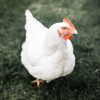
The authors of this recent Journal of Animal Science study hypothesized that supplementation with the amino acid taurine would attenuate oxidative stress in broiler chickens. Injury from oxidative stress happens when the body’s ability to control free radicals is overwhelmed.
Read more
-

Oct
18
Interpretive Summary: Homeopathic supplementations effects on stress response of growing pigs from road transportation
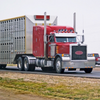
Livestock transportation may cause significant economic losses in the swine industry due to the animal's stress response. Previous research has linked road transportation to many factors negatively impacting the animal's physiological status; release of glucocorticoids, inhibition of antibodies following vaccination, and interferes with the absorption of nutrients in the small intestine, to name a few.
Read more
-

Oct
18
Interpretive Summary: Impacts of L-glutamine in swine nursery diets
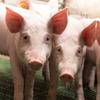
Stress from weaning and transport leads to poor piglet health outcomes such as diarrhea and increased susceptibility to infections. In the past, feeding prophylactic antibiotics prevented gastrointestinal disease and reduced piglet morbidity and mortality. In this recent Journal of Animal Science study, researchers fed nursery pigs GLN or antibiotics and then compared their intestinal health and gut microbiomes.
Read more
-

Oct
14
Interpretive Summary: Triennial reproduction symposium: L.E. Casida Award for Excellence in Graduate Education: mentoring graduate students in animal science

Specific research objectives within any lab are crucial; however, Dr. Wettemann states that opportunities for deviation and originality for new ideas should be encouraged. This is how students will ultimately solve the questions.
Read more
-

Oct
14
Interpretive Summary: Behavioral and stress responses to feeding time in pregnant sows
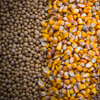
Feeding time can directly impact sow performance and stress levels. Depending on the time of day and length of time animals are fed, physiological and behavior changes may occur. How such changes impact animal welfare and performance, however, are poorly understood.
Read more
-

Oct
14
Interpretive Summary: Establishment of a bovine rumen epithelial cell line
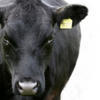
The rumen is essential for digestion and absorption in ruminant animals. Thus, feed ingredients, whether roughage or concentrate, must first be digested by enzymes from microbes in the rumen to produce volatile fatty acids (VFAs).
Read more
-

Oct
14
Interpretive Summary: Heat processing increased the digestibility of phosphorus in soybean expeller, canola meal, and canola expeller fed to growing pigs
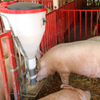
Over two-thirds of the total Phosphorus in plant-based ingredients used in swine diets are present as inositol hexakisphosphate, more commonly known as phytate, and is poorly available to the pig. Deficient Phosphorus levels can have adverse effects on growth performance and the eutrophication of water.
Read more
-

Oct
07
Interpretive Summary: 129 Genomic Relationship Between PRRSV Wild-type Infection and PRRSV...
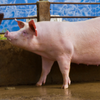
The selection of swine for production typically occurs in a purebred, high health, biosecure nucleus herd. However, this selection and management system limits industry capabilities to genetically select for traits the confer disease resistance and antibody response to pathogen challenges.
Read more
-

Oct
07
Interpretive Summary: A highly polymorphic caprine keratin-associated protein gene identified and its effect on cashmere traits
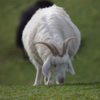
Cashmere fiber is a main product of cashmere goats that is produced by secondary hair follicles, and, like wool, the cashmere fiber is composed of hair-keratins and keratin-associated proteins.
Read more
-

Oct
07
Interpretive Summary: Effects of supplemental d-methionine in comparison to l-methionine on nitrogen retention...
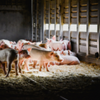
Methionine is a limiting amino acid in swine diets, but because of its high requirement by pigs and its low concentration in many feed ingredients, supplementation with synthetic sources of methionine is common in diets fed to pigs.
Read more
-

Oct
04
Interpretive Summary: Social isolation of goats: significance of visual contact...
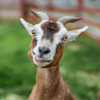
A paper recently published in the Journal of Animal Science evaluated the behavioral and physiological response in goats during isolation with and without visual contact with their herd- or pen-mates.
Read more
-

Oct
04
Interpretive Summary: Epigenetic changes in the offspring of heifers fed a restricted maternal diet
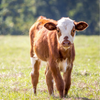
Residual feed intake (RFI) is a desired heritable trait in beef cattle. Animals with lower RFI are more feed efficient although epigenetic variations can impact this trait. The environmental circumstances and molecular mechanisms behind how epigenetics leads to variations in RFI however are not well understood.
Read more
-

Oct
04
Interpretive Summary: Ractopamine hydrochloride improves performance and reduces...
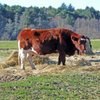
Finding efficient ways to reduce greenhouse gas emissions while increasing performance is crucial for optimizing the production of feedlot steers. In this recent Journal of Animal Science article, researchers studied how feeding ractopamine hydrochloride (RAC) impacted the performance and greenhouse gas emissions of feedlot steers.
Read more
-

Oct
04
Interpretive Summary: An investigation of links between metabolic rate and feed efficiency in European sea bass Dicentrarchus labrax
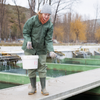
A paper recently published in the Journal of Animal Science investigated the links between metabolic rate and feed efficiency in the European sea bass Dicentrarchus labrax, a major species in European mariculture.
Read more
-

Sep
30
Interpretive Summary: Assessment of visceral organ growth in pigs from birth...
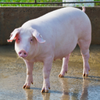
Visceral organs are essential for life in all animals due to their role in various aspects of digestive physiology, including the digestion of feedstuffs, absorption of nutrients, and metabolism of absorbed and circulating nutrients.
Read more
-

Sep
30
Interpretive Summary: Effects of dietary inclusion of yerba mate (Ilex paraguariensis) extract on lamb muscle metabolomics and physicochemical properties in meat
.png?sfvrsn=82b14cd1_0)
A study recently published in the Journal of Animal Science evaluated the effects of increasing levels of yerba mate (Ilex paraguariensis) extract as a feed additive for lambs and its effect on metabolic profile of the muscle and instrumental meat quality traits. The major components of meat, proteins and lipids, are susceptible to oxidation leading to off-flavors and color changes, which can cause consumer rejection of the product and may lead to loss in nutritional quality and generate compounds.
Read more
 OctAnimal Welfare Question in Massachusetts Delayed
OctAnimal Welfare Question in Massachusetts Delayed The Massachusetts House recently voted on the Question 3 initiative, prohibiting the sale of pork that does not meet the state’s production standards. Overwhelmingly, the House decided 156-1 to delay the initiative until January 1, 2023. Previously, it would have taken effect starting in 2022. The Massachusetts Senate still must vote on the decision.
The Massachusetts House recently voted on the Question 3 initiative, prohibiting the sale of pork that does not meet the state’s production standards. Overwhelmingly, the House decided 156-1 to delay the initiative until January 1, 2023. Previously, it would have taken effect starting in 2022. The Massachusetts Senate still must vote on the decision. OctMembers of PCAST Announced
OctMembers of PCAST Announced President Joe Biden announced the President’s Council of Advisors on Science and Technology (PCAST), external advisors charged with making science, technology, and innovation policy recommendations to the President and the White House. Thirty leaders were selected, containing the most diverse group in United States history.
President Joe Biden announced the President’s Council of Advisors on Science and Technology (PCAST), external advisors charged with making science, technology, and innovation policy recommendations to the President and the White House. Thirty leaders were selected, containing the most diverse group in United States history. OctInterpretive Summary: Potential use of ground brown rice for weanling pigs
OctInterpretive Summary: Potential use of ground brown rice for weanling pigs.png?sfvrsn=48c74cd1_0) Replacing corn with rice in diets for weaning or growing pigs has been studied in the past and has demonstrated improved growth performance and nutrient digestibility, but there is limited information about corn replacement with brown rice on growth performance, immune status, and gut microbiota of weanling pigs.
Replacing corn with rice in diets for weaning or growing pigs has been studied in the past and has demonstrated improved growth performance and nutrient digestibility, but there is limited information about corn replacement with brown rice on growth performance, immune status, and gut microbiota of weanling pigs. OctInterpretive Summary: Characterization of bacterial DNA identified in abscessed and non-abscessed bovine hepatic tissue at the time of harvest
OctInterpretive Summary: Characterization of bacterial DNA identified in abscessed and non-abscessed bovine hepatic tissue at the time of harvest Bovine liver abscesses continue to be a primary concern facing beef production efficiency and, despite current mitigation strategies, significant variation exists in the rate of liver condemnation.
Bovine liver abscesses continue to be a primary concern facing beef production efficiency and, despite current mitigation strategies, significant variation exists in the rate of liver condemnation. OctInterpretive Summary: Dietary taurine protects against oxidative stress in broiler chickens
OctInterpretive Summary: Dietary taurine protects against oxidative stress in broiler chickens The authors of this recent Journal of Animal Science study hypothesized that supplementation with the amino acid taurine would attenuate oxidative stress in broiler chickens. Injury from oxidative stress happens when the body’s ability to control free radicals is overwhelmed.
The authors of this recent Journal of Animal Science study hypothesized that supplementation with the amino acid taurine would attenuate oxidative stress in broiler chickens. Injury from oxidative stress happens when the body’s ability to control free radicals is overwhelmed. OctInterpretive Summary: Homeopathic supplementations effects on stress response of growing pigs from road transportation
OctInterpretive Summary: Homeopathic supplementations effects on stress response of growing pigs from road transportation Livestock transportation may cause significant economic losses in the swine industry due to the animal's stress response. Previous research has linked road transportation to many factors negatively impacting the animal's physiological status; release of glucocorticoids, inhibition of antibodies following vaccination, and interferes with the absorption of nutrients in the small intestine, to name a few.
Livestock transportation may cause significant economic losses in the swine industry due to the animal's stress response. Previous research has linked road transportation to many factors negatively impacting the animal's physiological status; release of glucocorticoids, inhibition of antibodies following vaccination, and interferes with the absorption of nutrients in the small intestine, to name a few. OctInterpretive Summary: Impacts of L-glutamine in swine nursery diets
OctInterpretive Summary: Impacts of L-glutamine in swine nursery diets Stress from weaning and transport leads to poor piglet health outcomes such as diarrhea and increased susceptibility to infections. In the past, feeding prophylactic antibiotics prevented gastrointestinal disease and reduced piglet morbidity and mortality. In this recent Journal of Animal Science study, researchers fed nursery pigs GLN or antibiotics and then compared their intestinal health and gut microbiomes.
Stress from weaning and transport leads to poor piglet health outcomes such as diarrhea and increased susceptibility to infections. In the past, feeding prophylactic antibiotics prevented gastrointestinal disease and reduced piglet morbidity and mortality. In this recent Journal of Animal Science study, researchers fed nursery pigs GLN or antibiotics and then compared their intestinal health and gut microbiomes. OctInterpretive Summary: Triennial reproduction symposium: L.E. Casida Award for Excellence in Graduate Education: mentoring graduate students in animal science
OctInterpretive Summary: Triennial reproduction symposium: L.E. Casida Award for Excellence in Graduate Education: mentoring graduate students in animal science Specific research objectives within any lab are crucial; however, Dr. Wettemann states that opportunities for deviation and originality for new ideas should be encouraged. This is how students will ultimately solve the questions.
Specific research objectives within any lab are crucial; however, Dr. Wettemann states that opportunities for deviation and originality for new ideas should be encouraged. This is how students will ultimately solve the questions. OctInterpretive Summary: Behavioral and stress responses to feeding time in pregnant sows
OctInterpretive Summary: Behavioral and stress responses to feeding time in pregnant sows Feeding time can directly impact sow performance and stress levels. Depending on the time of day and length of time animals are fed, physiological and behavior changes may occur. How such changes impact animal welfare and performance, however, are poorly understood.
Feeding time can directly impact sow performance and stress levels. Depending on the time of day and length of time animals are fed, physiological and behavior changes may occur. How such changes impact animal welfare and performance, however, are poorly understood. OctInterpretive Summary: Establishment of a bovine rumen epithelial cell line
OctInterpretive Summary: Establishment of a bovine rumen epithelial cell line The rumen is essential for digestion and absorption in ruminant animals. Thus, feed ingredients, whether roughage or concentrate, must first be digested by enzymes from microbes in the rumen to produce volatile fatty acids (VFAs).
The rumen is essential for digestion and absorption in ruminant animals. Thus, feed ingredients, whether roughage or concentrate, must first be digested by enzymes from microbes in the rumen to produce volatile fatty acids (VFAs). OctInterpretive Summary: Heat processing increased the digestibility of phosphorus in soybean expeller, canola meal, and canola expeller fed to growing pigs
OctInterpretive Summary: Heat processing increased the digestibility of phosphorus in soybean expeller, canola meal, and canola expeller fed to growing pigs Over two-thirds of the total Phosphorus in plant-based ingredients used in swine diets are present as inositol hexakisphosphate, more commonly known as phytate, and is poorly available to the pig. Deficient Phosphorus levels can have adverse effects on growth performance and the eutrophication of water.
Over two-thirds of the total Phosphorus in plant-based ingredients used in swine diets are present as inositol hexakisphosphate, more commonly known as phytate, and is poorly available to the pig. Deficient Phosphorus levels can have adverse effects on growth performance and the eutrophication of water. OctInterpretive Summary: 129 Genomic Relationship Between PRRSV Wild-type Infection and PRRSV...
OctInterpretive Summary: 129 Genomic Relationship Between PRRSV Wild-type Infection and PRRSV... The selection of swine for production typically occurs in a purebred, high health, biosecure nucleus herd. However, this selection and management system limits industry capabilities to genetically select for traits the confer disease resistance and antibody response to pathogen challenges.
The selection of swine for production typically occurs in a purebred, high health, biosecure nucleus herd. However, this selection and management system limits industry capabilities to genetically select for traits the confer disease resistance and antibody response to pathogen challenges. OctInterpretive Summary: A highly polymorphic caprine keratin-associated protein gene identified and its effect on cashmere traits
OctInterpretive Summary: A highly polymorphic caprine keratin-associated protein gene identified and its effect on cashmere traits Cashmere fiber is a main product of cashmere goats that is produced by secondary hair follicles, and, like wool, the cashmere fiber is composed of hair-keratins and keratin-associated proteins.
Cashmere fiber is a main product of cashmere goats that is produced by secondary hair follicles, and, like wool, the cashmere fiber is composed of hair-keratins and keratin-associated proteins. OctInterpretive Summary: Effects of supplemental d-methionine in comparison to l-methionine on nitrogen retention...
OctInterpretive Summary: Effects of supplemental d-methionine in comparison to l-methionine on nitrogen retention... Methionine is a limiting amino acid in swine diets, but because of its high requirement by pigs and its low concentration in many feed ingredients, supplementation with synthetic sources of methionine is common in diets fed to pigs.
Methionine is a limiting amino acid in swine diets, but because of its high requirement by pigs and its low concentration in many feed ingredients, supplementation with synthetic sources of methionine is common in diets fed to pigs. OctInterpretive Summary: Social isolation of goats: significance of visual contact...
OctInterpretive Summary: Social isolation of goats: significance of visual contact... A paper recently published in the Journal of Animal Science evaluated the behavioral and physiological response in goats during isolation with and without visual contact with their herd- or pen-mates.
A paper recently published in the Journal of Animal Science evaluated the behavioral and physiological response in goats during isolation with and without visual contact with their herd- or pen-mates. OctInterpretive Summary: Epigenetic changes in the offspring of heifers fed a restricted maternal diet
OctInterpretive Summary: Epigenetic changes in the offspring of heifers fed a restricted maternal diet Residual feed intake (RFI) is a desired heritable trait in beef cattle. Animals with lower RFI are more feed efficient although epigenetic variations can impact this trait. The environmental circumstances and molecular mechanisms behind how epigenetics leads to variations in RFI however are not well understood.
Residual feed intake (RFI) is a desired heritable trait in beef cattle. Animals with lower RFI are more feed efficient although epigenetic variations can impact this trait. The environmental circumstances and molecular mechanisms behind how epigenetics leads to variations in RFI however are not well understood. OctInterpretive Summary: Ractopamine hydrochloride improves performance and reduces...
OctInterpretive Summary: Ractopamine hydrochloride improves performance and reduces... Finding efficient ways to reduce greenhouse gas emissions while increasing performance is crucial for optimizing the production of feedlot steers. In this recent Journal of Animal Science article, researchers studied how feeding ractopamine hydrochloride (RAC) impacted the performance and greenhouse gas emissions of feedlot steers.
Finding efficient ways to reduce greenhouse gas emissions while increasing performance is crucial for optimizing the production of feedlot steers. In this recent Journal of Animal Science article, researchers studied how feeding ractopamine hydrochloride (RAC) impacted the performance and greenhouse gas emissions of feedlot steers. OctInterpretive Summary: An investigation of links between metabolic rate and feed efficiency in European sea bass Dicentrarchus labrax
OctInterpretive Summary: An investigation of links between metabolic rate and feed efficiency in European sea bass Dicentrarchus labrax A paper recently published in the Journal of Animal Science investigated the links between metabolic rate and feed efficiency in the European sea bass Dicentrarchus labrax, a major species in European mariculture.
A paper recently published in the Journal of Animal Science investigated the links between metabolic rate and feed efficiency in the European sea bass Dicentrarchus labrax, a major species in European mariculture. SepInterpretive Summary: Assessment of visceral organ growth in pigs from birth...
SepInterpretive Summary: Assessment of visceral organ growth in pigs from birth... Visceral organs are essential for life in all animals due to their role in various aspects of digestive physiology, including the digestion of feedstuffs, absorption of nutrients, and metabolism of absorbed and circulating nutrients.
Visceral organs are essential for life in all animals due to their role in various aspects of digestive physiology, including the digestion of feedstuffs, absorption of nutrients, and metabolism of absorbed and circulating nutrients. SepInterpretive Summary: Effects of dietary inclusion of yerba mate (Ilex paraguariensis) extract on lamb muscle metabolomics and physicochemical properties in meat
SepInterpretive Summary: Effects of dietary inclusion of yerba mate (Ilex paraguariensis) extract on lamb muscle metabolomics and physicochemical properties in meat.png?sfvrsn=82b14cd1_0) A study recently published in the Journal of Animal Science evaluated the effects of increasing levels of yerba mate (Ilex paraguariensis) extract as a feed additive for lambs and its effect on metabolic profile of the muscle and instrumental meat quality traits. The major components of meat, proteins and lipids, are susceptible to oxidation leading to off-flavors and color changes, which can cause consumer rejection of the product and may lead to loss in nutritional quality and generate compounds.
A study recently published in the Journal of Animal Science evaluated the effects of increasing levels of yerba mate (Ilex paraguariensis) extract as a feed additive for lambs and its effect on metabolic profile of the muscle and instrumental meat quality traits. The major components of meat, proteins and lipids, are susceptible to oxidation leading to off-flavors and color changes, which can cause consumer rejection of the product and may lead to loss in nutritional quality and generate compounds.



